The Art of Picturing Science
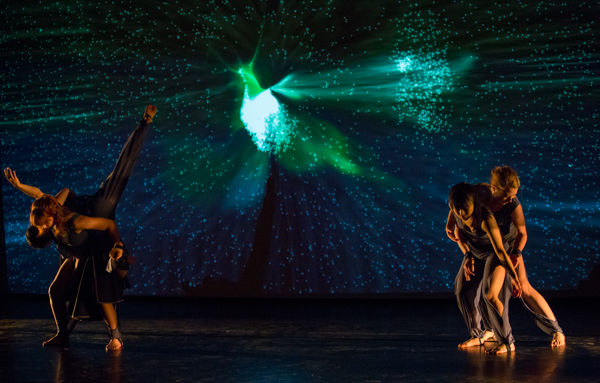
Capturing an image of the nano-world is a challenge. Scientists don’t really know what the world looks like on the atomic level, but making research progress requires representations, whether it’s in terms of balls and sticks, blobs, or terraces. dS adds a new dimension: it puts us in the picture. During a dS installation, you can literally step into, wander through, dance, and play in the atomic nano-world.
Capturing an image of the nano-world, with us in the picture, is also a challenge. That which performance-photographer Paul Blakemore has embraced. And, over the past 2 years, Paul has developed a thoughtful and dynamic approach to photographing the atomic dS world. Paul’s most recent set of images are stunning. They evoke beauty and simplicity from the complex, fast-moving, and multifaceted installation.
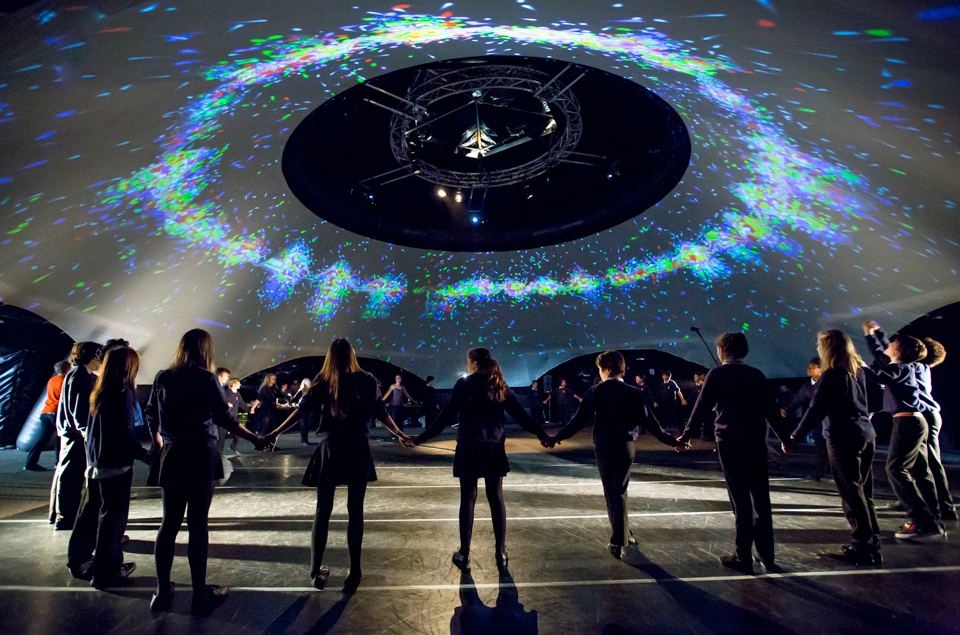
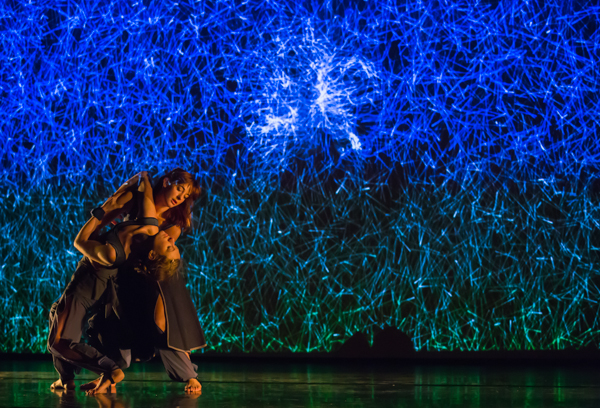
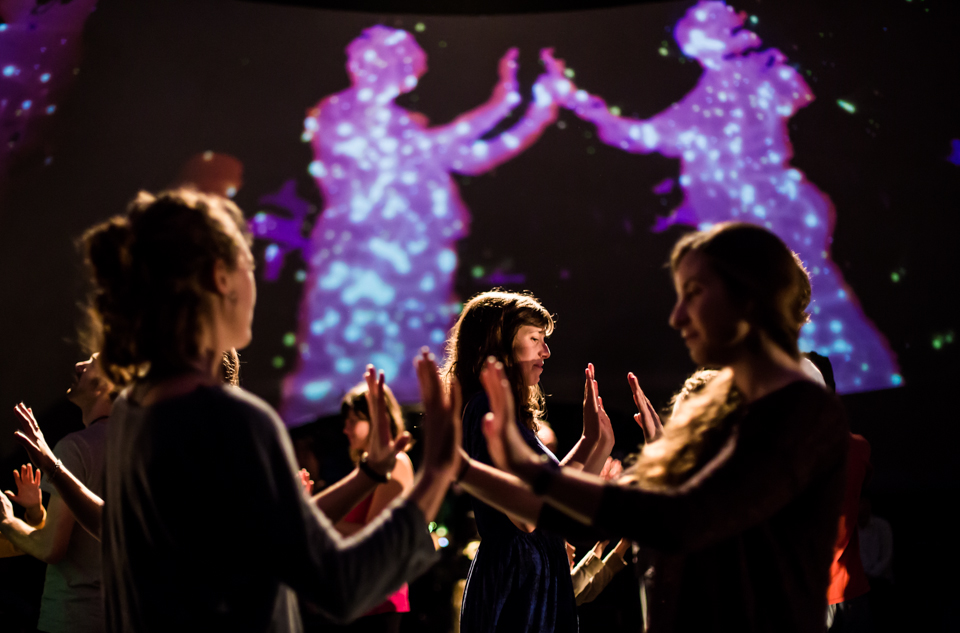
We love Paul’s work, and thought we’d ask him a few questions about his experience photographing dS. Here is what he had to say:
[dS] What were your first impressions of dS?
[PB] When I was first introduced to dS, at the Arnolfini in Bristol 2012, it took some time to understand the science behind the particle movements. By standing on the dance floor in-front of the cameras, and through witnessing my own avatar projected on the screen ahead, I opened up the box to how playful this project was going to be.
David Glowacki [project leader] has an enthusiastic and accommodating approach in his science explanations, and he has managed to engage the attention of the everyday person (including me!). I am impressed by the way he communicates the principles of something that is so complex, yet so integral to our lives.
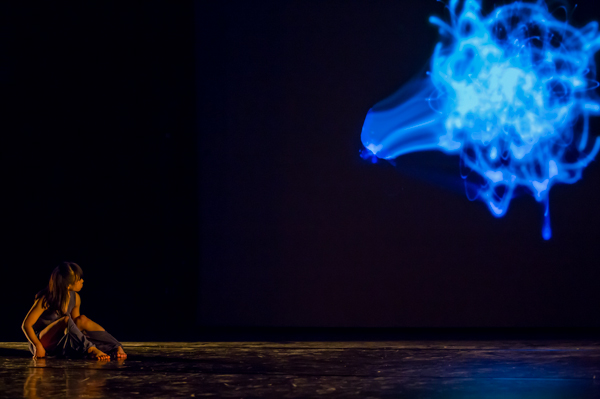
[dS] Have you found photographing dS challenging?
[PB] I find the most important points to know when capturing a performance are: the pre-direction, the group of artists involved, and the type of venue. Since I started photographing dS, there has been rapid developments in the projected landscapes. The projections transformed from being in a small studio, to a 360˚ immersive environment that captivates hundreds of school kids. Being versatile and responsive to this environment is a must, and especially important when dealing with the variety of lighting and movement transitions in dS.
Photography as a discipline is intertwined with timing, whether it’s capturing the iconic moment when one jumps over a puddle, or freezing time to illustrate a relationship. In the case of dS, the relationship is between the performer and the atomic movement. This relationship is the challenging thing to capture, because of the wealth of different ways you can move with the particles -there is not just one relationship, there are multiple layers, multiple answers. I approached each shot through trying to capture one of these multiple moments, the moment when particles are transferred from one being to another.
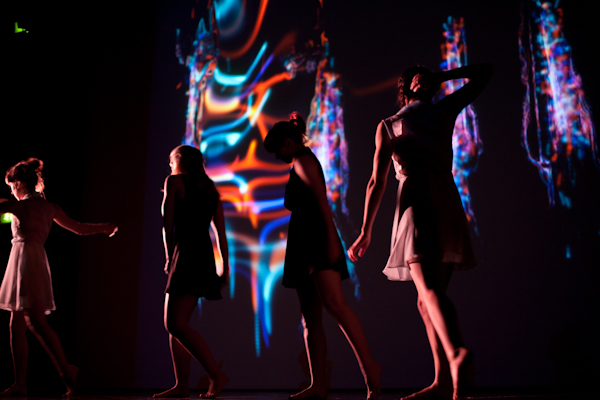
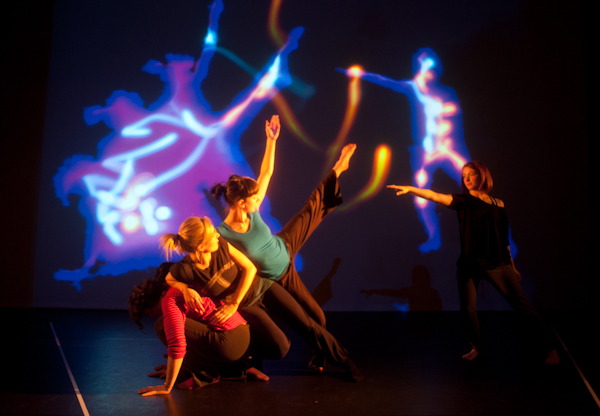
[dS] Have you learned anything?
[PB] There’s a great sense of collaboration amongst the dS team, and I have grown not only in my scientific understanding, but in my approach to my own practice. Technically, I have tested the limitations of my camera equipment, and developed skills in moving image and documentary making. On the whole, the project has been exciting to witness and be part of, and I am constantly reminded that this project is really cutting edge.
[dS] What approach do you take, is it different to other dance/performances you have worked on?
[PB] Initially, I jumped around and mirrored the movement of the dancers, whilst being sensitive and responsive to their movements. Being playful and open to improvisation helps me capture those moments of chance, whilst also placing me within the environment, and heightening my understanding of the science and structure of the piece.
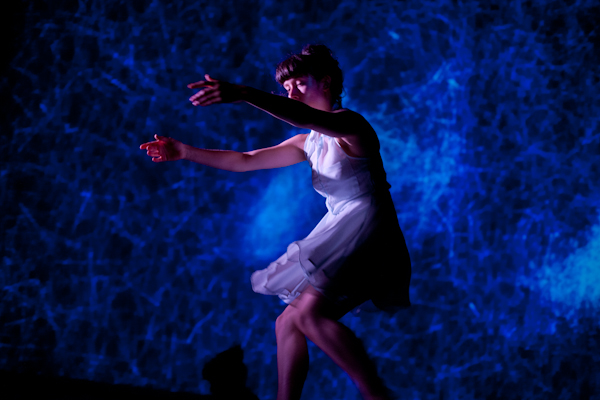
[dS] Do you have a favorite image?
[PB] I would say this image [below] captures the essence of dS. I love the simplicity of the composition, and the sense of gravity between the movement in the atoms and the dancers. I feel that the more playful this project becomes, the more moments like this are captured. I belive that captured-moments like this have potential to inform the visual and scientific understanding of the of the nano world.
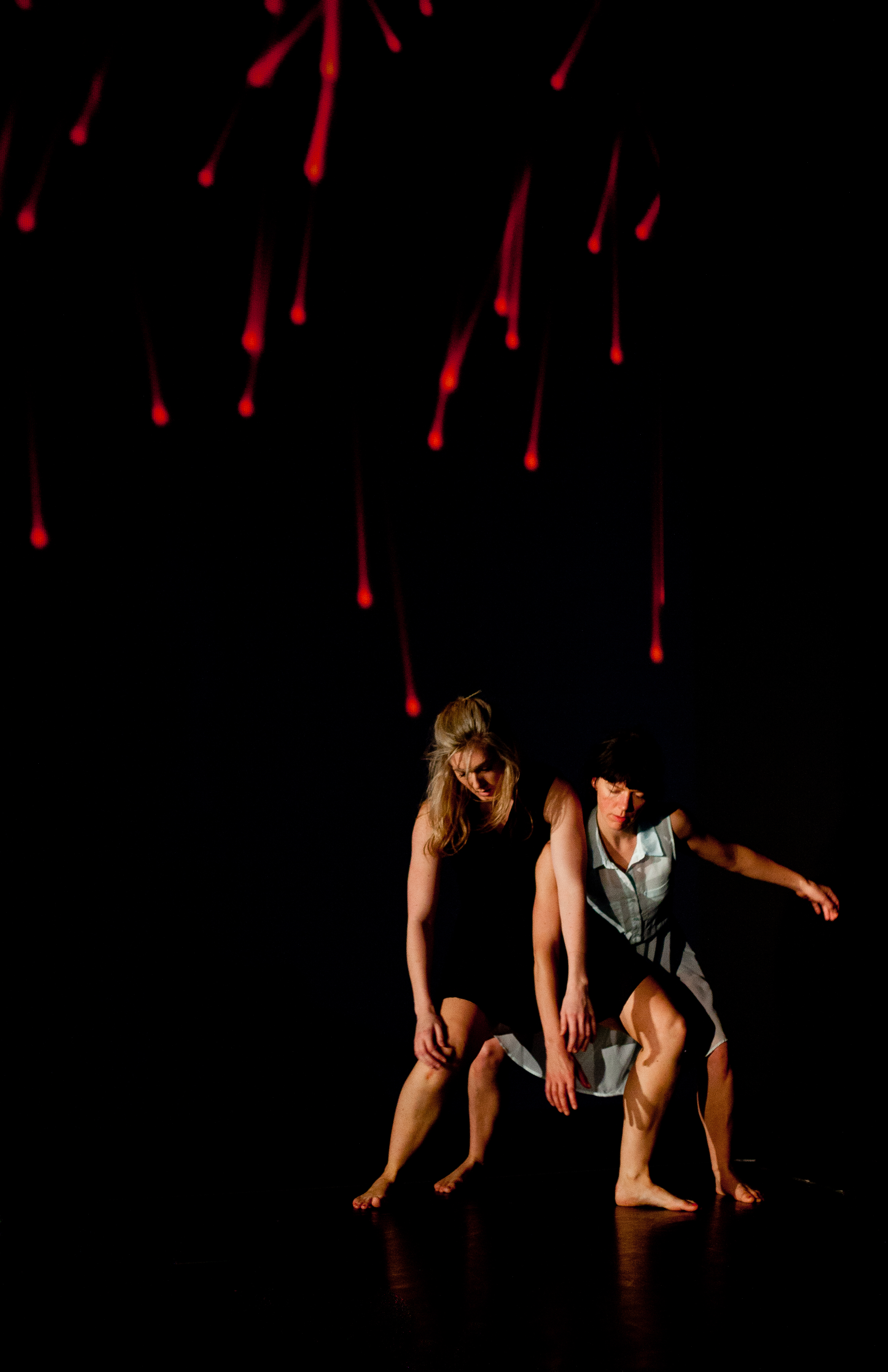
Visit Paul Blakemore’s website to view more of his work.





1 Comment
dS installations: Bristol, Germany, and London | David Glowacki
February 25, 2014[…] Imperica, and the Huffington Post. And our dS photographer Paul Blakemore has recently put together a stunning photo essay describing some of the amazing shots he’s been able to […]